Routinely, HR departments ask managers and workers to participate in performance management processes. But too often, employees find the exercise de-motivating, and HR’s goal—improving performance—just isn’t met. To leverage performance management as a motivating, strategic business tool, companies can consider a strengths-based approach: focusing on workers’ natural areas of talent to inspire improvement and advance the business toward its goals. For more insights and perspectives on managing the workplace in addition to performance management, discover TemPositions’ blog.
Muriel Watkins, founder and president of MRW Consulting Group International LLC, visited TemPositions’ HR Roundtable Series on Thursday, February 27, 2014 to discuss the well-studied concepts supporting strengths-based performance management. Watkins focuses her entire practice on enhancing HR’s effectiveness—and is a passionate advocate for this strategy.
There’s a “wide spectrum of opinion” on performance management, she began, with most leaders (within and beyond HR) considering it somewhere between “a waste of time” and “the most important component” of managing their talent. It’s easy to understand why, she explained, because in so many cases, its impact appears negligible or even negative.
Watkins cited a study from the Institute for Corporate Productivity, in which 86% of HR respondents said their company uses some performance management process. But 70% characterized these same processes as “not effective.”
In addition, nearly 30% of employees surveyed said they did not believe their company’s performance management system was “fair.” If no one has faith in a process, she reasoned, how can it improve performance?
Many forward-looking companies are redesigning their performance management processes with strengths-based principles in mind. Leading companies like Toyota Financial Services, REI, Netflix, and Adobe have incrementally adopted aspects of the approach, with encouraging results. And even the smallest of companies can begin exploring what works for them in stages.
“You don’t have to jump in with both feet, to start,” Watkins assured attendees. “You can take some of these concepts and integrate them into what you’re already doing.”
An Introduction to Strengths-based Performance Management
As Watkins described, strengths-based performance management is well-grounded in research. The concept aligns closely with the work of Alex Linley, founder of the Centre for Applied Positive Psychology.
Linley explored the effects of giving people feedback that “accentuates the positives, and focuses on recognizing good work and the strengths that people bring to the job.” While weaknesses are still addressed, greater focus is placed on areas of worker strength—defined as “pre-existing capacity for a particular way of behaving, thinking or feeling that is authentic and energizing to the user, and enables optimal functioning, development and performance.”
It is the “energizing” aspect of a strength that can be most helpful to employers, Watkins explained. Rather than dwelling on skills at which a worker may never become excellent (an experience that can feel de-motivating), HR can devote more time exploring strengths as building blocks (an experience that more often feels motivating).
In a strengths-based feedback process, HR focuses primarily on past “achievement of goals” and “demonstration of strengths.” (Weaknesses or areas of failure are also addressed, but do not dominate.) Looking to the future, the company encourages the employee’s development by suggesting ways the worker can leverage existing strengths to improve their performance.
Strengths-based performance management works best within specific parameters. It’s most effective when feedback is offered in real time, and it must be honest. Managers must invest in truly getting to know their teams, ensuring they can accurately identify and explore the strengths of each member.
The system operates within this four-step framework:
- DISCOVERY/AWARENESS
In this initial phase, the employee begins learning to define and describe their strengths—their greatest natural proficiencies. - APPLICATION
In this phase, the employee develops the ability to apply their strengths, guiding their behavior in positive directions to enhance/improve their performance. - RELATIONSHIP
In this advanced phase, the employee demonstrates understanding of their own uniqueness, and grasps that developing their strengths will reinforce what makes them special. - INTEGRATION
In this final phase, the employee fully comprehends the link between their strengths and their successes—setting the stage for more applications and future victories.
Of course, some weaknesses can’t be ignored. A strengths-based approach draws clear distinction between weaknesses that are “tolerable” vs.” business-critical.” As HR leaders know well, there are core competencies that are central to any position. And in those areas, employers are right to require a high level of proficiency—as a condition of employment.
But in many cases, all-around excellence isn’t critically important to success in a given role, Watkins stressed. Some flexibility is often possible, and it can enable the employer to reap the motivational benefits of strengths-based management.
This motivational benefit is proven. According to a 2002 survey from the Corporate Leadership Counsel—incorporating input from nearly 20,000 worldwide employees—strengths-based management led to a 36% improvement in performance. By contrast, focusing on weaknesses led to a 27% decline.
Designing a Performance Management Program
As part of her presentation, Watkins led a whiteboard exercise—challenging attendees to brainstorm around performance management and design their own new systems.
Tradition systems offer feedback periodically, but rarely on an ongoing basis. HR discusses employees’ strengths briefly at the beginning of a review. But the majority of the review is spent looking back at the past evaluation period, and development conversations focus heavily on the worker’s shortcomings.
To improve on these traditional practices, HR Roundtable attendees discussed what they’d implement if given the chance to create a new, better system. Suggestions included:
Conduct 360-degree Evaluations
It’s very useful to gather information from multiple sources. Attendees recommended attaining a well-rounded portrait of performance by including peers and subordinates, as well as superiors, in the review process.
Integrate Coaching/Mentoring & Learning Opportunities
To ensure systems result in positive change, attendees recommended that HR offer coaching and education across levels. Managing others is a distinct skill that newly-promoted leaders may not yet have, and junior employees may need support to grow in their positions. Attendees also cited the need to develop talent by integrating mentorship as a core manager responsibility.
Confirm/Update Competencies
Antiquated forms and processes should be updated to ensure that the most current, relevant skill sets are delineated and used to evaluate performance. Attendees recommended considering different competencies for different levels or divisions within the organization. They also recommended aligning competencies to support organizational goals and business strategy.
Provide Ongoing Support
Finally, attendees strongly recommended keeping HR involved to support any new review process. HR must remain available for questions and to provide guidance to managers.
Watkins agreed with attendees’ suggestions, and supplemented them with several more concepts of her own:
Establish an Ongoing Process
Rather than manage performance once per year, Watkins encourages more frequent check-ins, saying, “You want to have the conversation at the time it makes the most sense; when someone is just coming off a project, that’s the best time to set them up for success on the next one.”
Simplify Performance Management
HR should make performance management less time-consuming/onerous by using less complicated processes. Multi-page forms and endless rating systems are burdensome for managers to both think through and complete. And they can make employees feel like they’re receiving a “report card” that reduces their contribution to a “final score.”
Some objective ratings may be unavoidable, Watkins explained, because they were born of legal necessity. Employment attorneys frequently stress the need for documentation to protect their corporate clients against claims of unlawful employment practices (e.g., discrimination). But often, a well-considered but moderate amount of paperwork can be sufficient for meeting these documentation needs.
Focus on the Employee
Performance management offers companies the chance to develop workers’ talents and skill sets. But this can only be accomplished if the process focuses on the employee.
Watkins acknowledged that this can feel counter intuitive. Again, so much of traditional performance management was designed to protect the company. But by shaping the system to benefit the employee more, HR also shapes it to improve their performance for the company.
Look for shared objectives, she advised. HR can help a worker achieve goals they’ve set for themselves—from learning new skills to taking on greater responsibility in hopes of advancement/promotion. The employee will appreciate the company’s investment in them. And this appreciation can make them more receptive to suggestions from HR on how to apply their new skills in ways that benefit the organization.
Focusing on individual employees’ definitions of “success” can also help HR communicate more effectively across the many generations in the workforce today. As attendees agreed, different generations can have very different communication styles and expectations for helpful or constructive feedback.
Localize the Process
Employees are most likely to invest in performance management processes that feel relevant to them. Larger companies especially—with offices across geographies and cultures, and even different directives from central leadership—are less likely to see performance improved consistently through use of a single form, for example. Localize what you do and create customized processes that make better sense, Watkins urged, to enhance employee buy-in.
Look to the Future
It’s impossible to evaluate performance without looking back at past behaviors, accomplishments and struggles. But keep proportion in mind. In the review process, spend an equal amount of time—or more—talking about the future. Recommend actions/adjustments for the employee to make, and discuss what the worker can do in the coming year in specific terms. Remember to connect the employee’s goals to strategic company needs.
Build on Strengths and Passions
When meeting with employees, Watkins recommended, focus on the areas of their role in which they excel, and ask them about the aspects of the job they enjoy the most. This conversation will reveal a worker’s natural talents and facilities—their strengths. HR can then partner with each worker to leverage those strengths in ways that are both “fulfilling to the individual and can help them contribute in a meaningful way to the organization.”
As always, if an employee can’t meet basic expectations, weaknesses must be addressed. But in many cases, she stressed, choosing battles is smarter for HR and better for the company.
“It’s not an either-or proposition,” Watkins said. “It’s about changing the focus—talking more about strengths to suggest specific ways to improve moving forward.”
Preparing to Adopt a Strengths-based Approach
Change always takes time, particularly in larger organizations. But by recognizing the challenges ahead, HR can prepare to implement changes in performance management successfully.
It’s safe to anticipate, Watkins explained, that some managers and even employees themselves will resist any new process. The urge to keep to traditions (even ineffective ones) can be very strong, and the old system inspired quite a bit of faith. Despite finding the process uncomfortable, many employees believe it works.
In one intriguing poll, Gallup surveyed workers before and after implementation of a strengths-based performance management process. Prior to going through the experience, 59% of respondents said they believed focusing on their weaknesses would help them improve their performance. But after participating in a strengths-based process, 60% agreed with the statement, “Focusing on my strengths has helped me to be more productive.”
Therefore, Watkins recommended, HR should engage the company’s most forward-thinking managers to start—and run a small pilot program. Open-minded teams are most likely to embrace this new, positive process. They’ll honestly report successes and challenges and integrate HR’s tweaks. And eventually, they’ll advocate for the approach among those who remain faithful to the traditional system, like the well-intentioned workers in the Gallup poll.
Once the pilot is complete HR can then institute broader manager training in preparation for full implementation. Part of this training must be to reassure managers it is appropriate, even advantageous, to have individualized relationships with their team members. Employment law rightfully tells managers that every worker must be treated “fairly and equitably.” But no two workers are exactly alike; managers don’t need to treat all workers the same to treat them fairly.
Implementing a Strengths-based Performance Management System
When HR is finally ready to begin introducing strengths-based management as a matter of formalized policy, Watkins recommended the following eight-step implementation process:
- Get Leadership’s Support
Leadership’s buy-in will make it possible for HR to invest the time, energy and department resources to see implementation through its many phases and course corrections. It will also help HR persuade managers and employees to take the new initiative seriously. - Identify/Define Business-critical Strengths
HR should consider the company’s up-to-date business strategies, identifying and clearly defining the core strengths, competencies and behaviors that will bring the organization closer to its goals. A system that is clearly linked to business success is more likely to inspire meaningful engagement, as employees will understand why and how their managers want them to focus on specific strengths. - Redefine Performance Expectations
Weighing individual talents and business needs, offer flexibility to shape individual roles to feature workers’ strengths. (Again, mission-critical proficiencies are still required.) This sets employees up for success, enabling them to feel confident and motivated to excel. They’ll feel personally recognized for what they do well, and supported in their weaker areas through strategic team formation (see #4). - Build Strong Partnerships & Teams
Rather than stand removed from day-to-day business, HR can partner with managers to put the most effective teams together from a strengths-based perspective. They can pair up employees with complementary skills, and/or build teams that combine individual strengths to form a stronger whole. - Launch a Formal Pilot Program
It’s critical to give HR’s planned approach a meaningful test run before implementing the new system. As with the initial pilot, Watkins recommended a shorter-term process involving receptive managers and workers, this time in larger numbers. Prioritize agility, she advised, and make real-time modifications as needed to improve the process. Experiment incrementally and don’t move forward into full implementation until pilots succeed. - Integrate Strengths-Based Approaches Across Employment Decisions
Ultimately, a fully-implemented strengths-based performance management system should span the continuum of the employment relationship. The company can recruit for the strengths it needs, and talent can be developed using the strengths-based approach. This holistic application will help employees see the company is fully invested in the strategy.Watkins described how she applies an integrated strengths-based approach within her own company. When recruiting, she considers the existing core strengths within the organization and looks to onboard professionals with complementary skills—and personal goals that align with her business needs. These professionals help drive the practice forward. - Refine, Revise, Optimize
Watkins urged attendees to assume their new system will need adjustments before it is finalized. They should demonstrate patience and care, taking the time to gather input from managers and workers alike.Most importantly, HR must explore whether the process is achieving the desired effects. Do managers feel they have a better understanding of the potential on their team? Do employees feel motivated by the change? These results matter. If the system can’t deliver them, it needs further refinement. - Commit to Ongoing Manager Training & Communications HR will need to provide ongoing manager guidance. A standard training session can be used to launch the approach. But some managers may be stumped by unique challenges that arise. Others may give in to the temptation to discuss positive topics exclusively, avoiding difficult conversations about weaknesses even when they should take place.At the same time, appreciate that these same manager will be a rich resource to HR. As they get to know their people better and interact with their teams in new ways—coming to understand and appreciate what strengths really matter in various roles—the insights they gather can guide HR’s integrated strengths-based performance management efforts.
Build Upon Strengths to Find Success
Watkins completed her presentation by encouraging attendees to keep an open mind and start a conversation with leadership. The strengths-based approach will look different in every application, as every business has different needs. But ultimately, every organization wants energized employees who feel motivated to meet or exceed expectations.
Think about how strengths-based performance management might enhance your organization, she urged. Try a small pilot program, and keep refining. Look for ways to make performance management an integral part of business strategy, so performance evaluations and development conversations can truly benefit both the company and the worker.
After all, improving individual performance is the goal. The strengths-based approach was designed to drive business growth by developing people into star employees.
“The process should be helpful,” she concluded. “And it should motivate people to want to give your organization their best.”
Anne DeAcetis is a freelance writer based in New York. Reach her at anne.deacetis@gmail.com.
The HR Roundtable is a breakfast forum for human resources professionals in New York City sponsored by The TemPositions Group of Companies. TemPositions, one of the largest staffing companies in the New York tri-state area with operations in California, has been helping businesses with their short- and long-term staffing needs since 1962. Visit them online at www.tempositions.com or email them at info@tempositions.com.
Join the next HR Roundtable
Don’t miss our next discussion! Sign up for TemPositions’ next HR Roundtable here. This SHRM certified event will earn you or your HR team members 1.5 professional development credits.
Please note: the information reflected in this post is not official legal advice nor does it necessary reflect the opinions of the associated firms.








